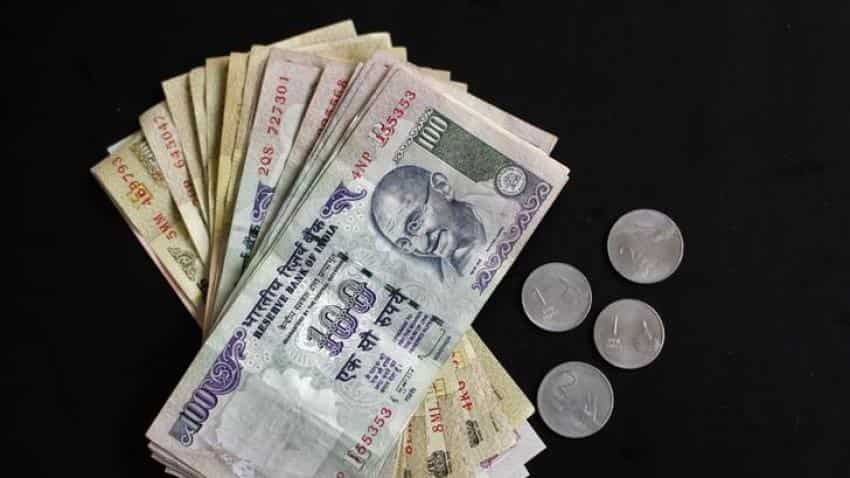Exporters sit with bated breath as Rupee outshines peer currencies
Vinod Nair, Head Of Research at Geojit Financial Services said, "Risk will emerge if we continue to outperform other EMs in the long-term, whereas this is an intermediary phenomenon led by strong FIIs inflow post the overwhelming state election result which will stabilise in the near-term."

Even as Indian exports rose were finally seeing some good months the sudden appreciation in the Rupee has made exporters a worried lot.
Exports rose for the sixth straight month in February registering a growth of 17.5% in the given month. Data published by Ministry of Commerce shows, in the month of February 2017, India's export has recorded a double-digit growth of 17.48% in dollar terms valued at $24.490 billion as compared to $20.845 billion during February,2016.
Gaurav Dua, Head of Research, Sharekhan said, "Appreciation of the rupee adversely impacts the export driven businesses like IT services, textiles & garments, gems & jewelry and pharmaceuticals. On the other hand, the importers tend to benefit from appreciation of the rupee against the dollar."
Analysts at Care Rating said, "Exports lose their shine as the competitive edge is lost. The rupee has already been one of the best performing currencies with the dollar holding on against the euro. In these conditions further appreciation will come in the way of growth in exports."
Since the elections results were announced last week, Rupee began to appreciate and touched its over an-year high of 65.40 per dollar earlier this week.
On Friday, the rupee was trading at 65.555 against US dollar up by 0.140 paise or 0.21%.
Not only this, foreign fund inflows have also boosted the rupee. Data compiled by NSDL stated that in the last three days, Foreign Portfolio Investors (FPI) have invested in a total of Rs 6,593.80 crore in equity and debt markets.
However, as many investors enjoy the current trend in rupee, India's export and export-related sectors are looking at uncertain times.
Dua said, "Some of the export driven sectors like IT services do follow a strict hedging policy that helps mitigate the adverse impact in the immediate term. Moreover, the impact is not very critical in case of high margin businesses like IT services and pharmaceuticals. However, the textile, garments and other manufacturing companies tend to get impacted more severely by rupee appreciation due to lower margin profile."
Vinod Nair, Head Of Research at Geojit Financial Services said, "Risk will emerge if we continue to outperform other EMs in the long-term, whereas this is an intermediary phenomenon led by strong FIIs inflow post the overwhelming state election result which will stabilise in the near-term."
Rudra Sensarma, professor of economics, IIM Kozhikode said, "The rupee has been strengthening against the US dollar since December 2016 and the USD/INR rate has now fallen further after the UP election results. However the past few months have also witnessed an uptick in exports signalling that India’s exports are de-linked from short term exchange rate fluctuations."
Nair feels IT, Pharma, Textile and export oriented companies are likely to underperform in the near-term.
However, in the short-term, rupee appreciation is not at all a matter of concern.
Sensarma said, "Since most exporters use short term forward contracts to hedge their forex exposures, they would be unfazed by the strengthening rupee unless it significantly drops below the 65-68 range it has been maintaining for more than a year."
Indian exporters will look at the Reserve Bank of India (RBI) to intervene. Media reports suggest that during the past week, RBI did intervene in the forex markets in order to stabilise the rupee.
Care said," RBI will view these developments more from the forex angle rather than interest rate consideration as monetary policy will be determined by CPI inflation and hence be data driven."
04:18 PM IST






 Rupee vs dollar in times of coronavirus: INR slips 32 paise to 75.21 amid scare
Rupee vs dollar in times of coronavirus: INR slips 32 paise to 75.21 amid scare Rupee in times of coronavirus mahamari: INR rises 56 paise against US dollar to 74.60 in early trade
Rupee in times of coronavirus mahamari: INR rises 56 paise against US dollar to 74.60 in early trade Rupee rises 18 paise to 76.02 against US dollar in early trade
Rupee rises 18 paise to 76.02 against US dollar in early trade Rupee weakens to record low; breaches 76 mark
Rupee weakens to record low; breaches 76 mark Rupee vs dollar: INR tanks 95 paise, falls below 76 level against US dollar
Rupee vs dollar: INR tanks 95 paise, falls below 76 level against US dollar